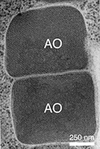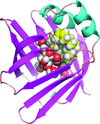issue contents
March 2016 issue

editorial
BIOLOGY | MEDICINE
An exciting future is outlined in which new approaches complementary to conventional X-ray crystallography will substantially widen the reach of structural biology. Primary among these are the recent advances in cryoelectron microscopy and the growing applications of free electron lasers.
scientific commentaries
MATERIALS | COMPUTATION
Ultra-fast diffraction and phase contrast imaging experiments on crack propagation in silicon, reported in the current issue of IUCrJ, are reviewed in the light of our present knowledge and its industrial importance.
research letters
BIOLOGY | MEDICINE
The application of serial femtosecond crystallography to naturally occurring peroxisomal protein crystals within yeast cells is described. The concept of utilizing peroxisomes for the production of protein nanocrystals is outlined.
CHEMISTRY | CRYSTENG
Download citation


Download citation


A logic driven synthetic approach is used in this first report of the isolation of stoichiometric four-component molecular solids. A possible extension to a five-component solid is also described.
research papers
CHEMISTRY | CRYSTENG
Download citation


Download citation


A combinatorial synthetic approach is described for the isolation of quaternary cocrystals. The strategy outlines chemical and geometrical modulations in the long-range synthon Aufbau modules (LSAMs) to systematically increase the number of components.
MATERIALS | COMPUTATION
Crack propagation in an Si wafer under thermal stress is depicted by combining diffraction and transmission X-ray imaging. The use of synchrotron radiation allows for the high imaging frame rates required to follow the crack dynamics in real time.
BIOLOGY | MEDICINE
Neutron and high-resolution X-ray crystallography were used to determine fully the structure of the internal water cluster in H-FABP. Analysis of the orientation and electrostatic properties of the water molecules showed significant alignment of the permanent dipoles of the water molecules with the protein electrostatic field.
PDB reference: RT X+N structure of H-FABP, 5ce4
PHYSICS | FELS
Extracting structure-factor moduli from diffraction patterns of protein nanocrystals is one of the critical issues of serial femtosecond X-ray crystallography. Unlike a conventional crystallography experiment, serial femtosecond crystallography combines data from hundreds or thousands of crystals of varying size and quality, a situation reminiscent of powder diffraction. Here the whole-pattern fitting technique, originally designed for one-dimensional powder diffraction crystallography, has been reconsidered and applied to the analysis of higher-dimensional serial femtosecond X-ray crystallography data. For nanocrystals with a small number of unit cells, the whole-pattern fitting approach is shown to be more accurate than integration-based Monte Carlo methods.
CHEMISTRY | CRYSTENG
Download citation


Download citation


The protocols of the crystalline sponge method, particularly those in the soaking, data collection and refinement processes, are considerably improved to give reliable structural information.
CHEMISTRY | CRYSTENG
Download citation


Download citation


The first report of a ternary cocrystal acetazolamide–nicotinamide–pyridone (1:1:1) for a sulfonamide drug with amide coformers.



 journal menu
journal menu




 access
access






















